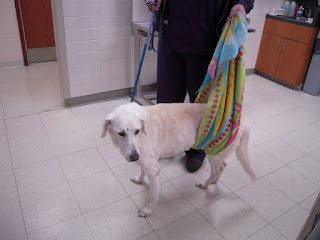The vestibular system is the sensory system that provides the brain with information about spatial orientation and movement. Using the information from the vestibular system, the brain then tells the eyes and extremities how they should move. A healthy vestibular system is essential for an animal's sense of balance. Canine vestibular syndrome is a disorder of the vestibular system that usually affects older dogs, but can sometimes occur in middle aged dogs as well. Dogs with a history of chronic ear infections may have an increased chance of developing vestibular syndrome.
The symptoms include a sudden loss of balance, head tilt, nystagmus (eyes moving side to side, or up and down), and dysfunction in the facial nerves. It can be heartbreaking for an owner to see their dog with these symptoms. Fortunately, the condition often resolves within a few weeks. Other conditions such as stroke, tumors on the cerebellum, head trauma, inner ear infection, meningioencephalitis, or other problems can cause similar symptoms, so it is important to bring the dog to a veterinarian for a proper diagnosis.
Dogs with vestibular disease will need assistance with feeding and mobility until the symptoms subside. If the dog is unable to stand on its own, a towel can be used as a sling to hold up the rear of the dog, as shown in the picture below.

Massaging the neck of vestibular patients has been shown to be helpful as there are acupressure points in this area that may speed recovery time when activated. Some owners even elect to bring their dog to physical therapy to help with recovery.
Should your dog develop vestibular syndrome, we are here for you at VACC to help with the recovery process.